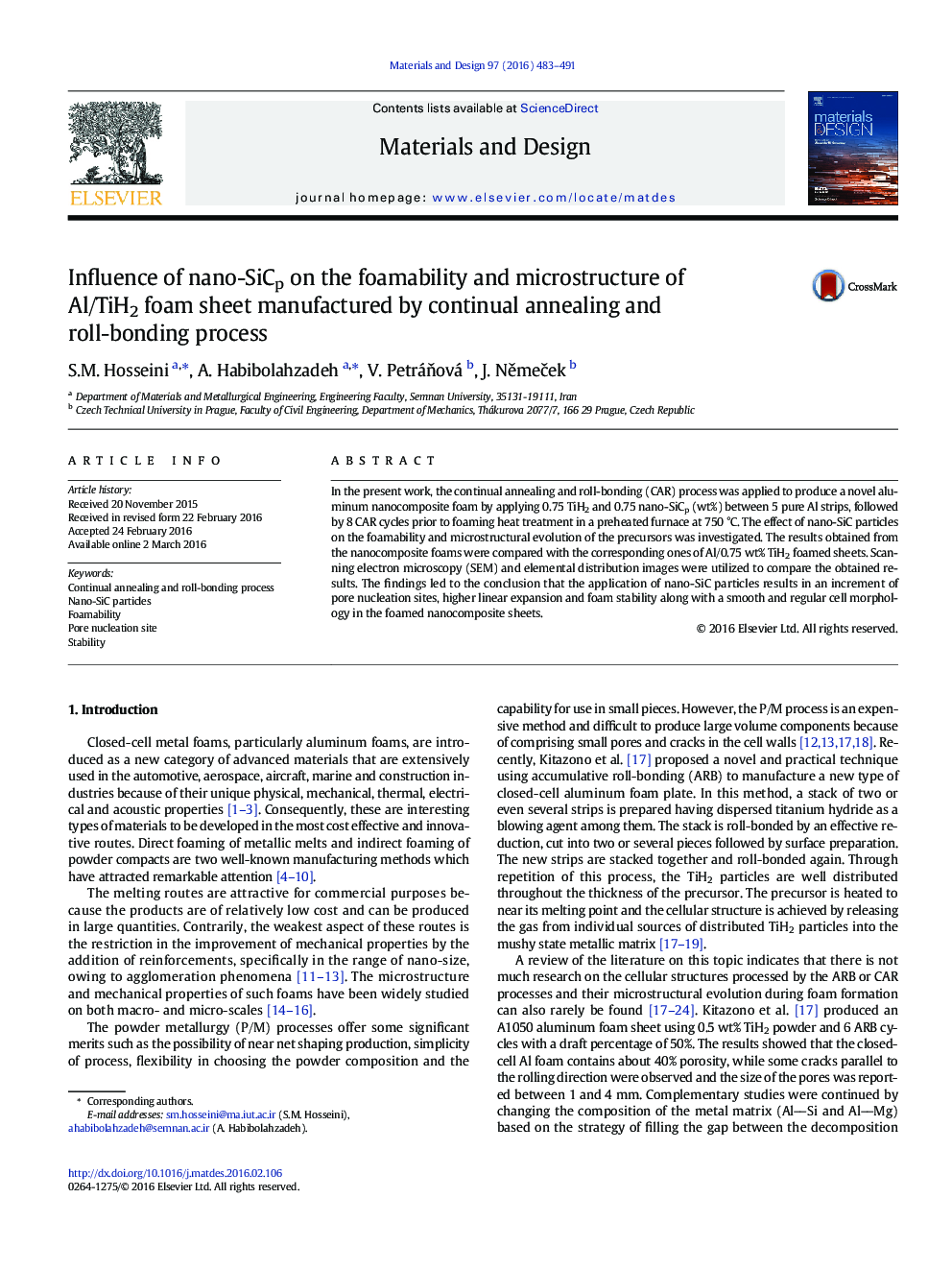| Article ID | Journal | Published Year | Pages | File Type |
|---|---|---|---|---|
| 828103 | Materials & Design | 2016 | 9 Pages |
•A new closed-cell aluminum nanocomposite foam containing 0.75 TiH2 and 0.75 nano-SiCp (wt%) was successfully fabricated.•The nucleation behavior of pores was influenced by the presence of nano-SiC particles.•An increase in stability, decrease in drainage, collapse and cell coarsening were observed in Al foam nanocomposite.
In the present work, the continual annealing and roll-bonding (CAR) process was applied to produce a novel aluminum nanocomposite foam by applying 0.75 TiH2 and 0.75 nano-SiCp (wt%) between 5 pure Al strips, followed by 8 CAR cycles prior to foaming heat treatment in a preheated furnace at 750 °C. The effect of nano-SiC particles on the foamability and microstructural evolution of the precursors was investigated. The results obtained from the nanocomposite foams were compared with the corresponding ones of Al/0.75 wt% TiH2 foamed sheets. Scanning electron microscopy (SEM) and elemental distribution images were utilized to compare the obtained results. The findings led to the conclusion that the application of nano-SiC particles results in an increment of pore nucleation sites, higher linear expansion and foam stability along with a smooth and regular cell morphology in the foamed nanocomposite sheets.
Graphical abstractFigure optionsDownload full-size imageDownload as PowerPoint slide
